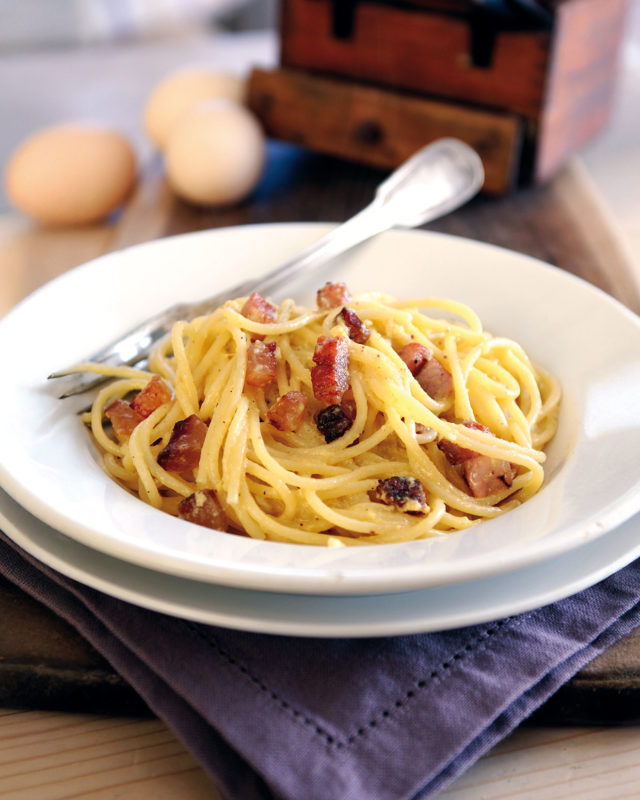Leave the cream in the fridge – Mario Matassa makes this spaghetti carbonara recipe in traditional Italian style, with simple, high-quality ingredients.

The history of carbonara is very short. There’s no reference to it in cookbooks over 50 years old, at least not with this name. There are many stories, of varying credibility, which claim to explain its origins.
The name carbonara derives from carbone, charcoal. So, one theory says it was how Roman charcoal burners cooked pasta. Others attribute it to the carbonari – the insurgents who fought for independence from the Austrians 200 years ago. Others say it was invented for American soldiers in Rome after WWII. The latter is a nice story, but it doesn’t explain the name.
There are a few acceptable variations. If you cannot get guanciale (cheek), pancetta works almost as well. I’ve been served this with parmesan instead of pecorino, but it’s not the same, and good pecorino is widely available. Also, leave the cream and parsley in the fridge – it doesn’t belong here.
Spaghetti Carbonara | Spaghetti alla Carbonara
➤ SERVES: 4
➤ PREPARATION: 15 minutes
➤ COOKING: 20 minutes
Ingredients:
- 150g guanciale or pancetta, cubed
- 2 free-range eggs
- 30g pecorino cheese, grated
- Salt and freshly ground black pepper
- 320g spaghetti (although the Romans also use rigatoni)
Instructions:
- Cook the guanciale over a low heat in a heavy-based frying pan just until the fat has dissolved. Don’t allow it to crisp too much.
- In a bowl, beat the eggs together. Add the grated cheese and plenty of freshly ground black pepper.
- Boil the pasta in a saucepan of salted water until al dente. Drain, then add to the frying pan with the guanciale.
- Turn off the heat, add the eggs and cheese, then stir rapidly. Don’t overcook the eggs – the residual heat from the pan and the pasta will be enough to cook them through. Serve immediately.
For another taste of Italy, browse more Italian pasta recipes
Words and recipe by Mario Matassa
